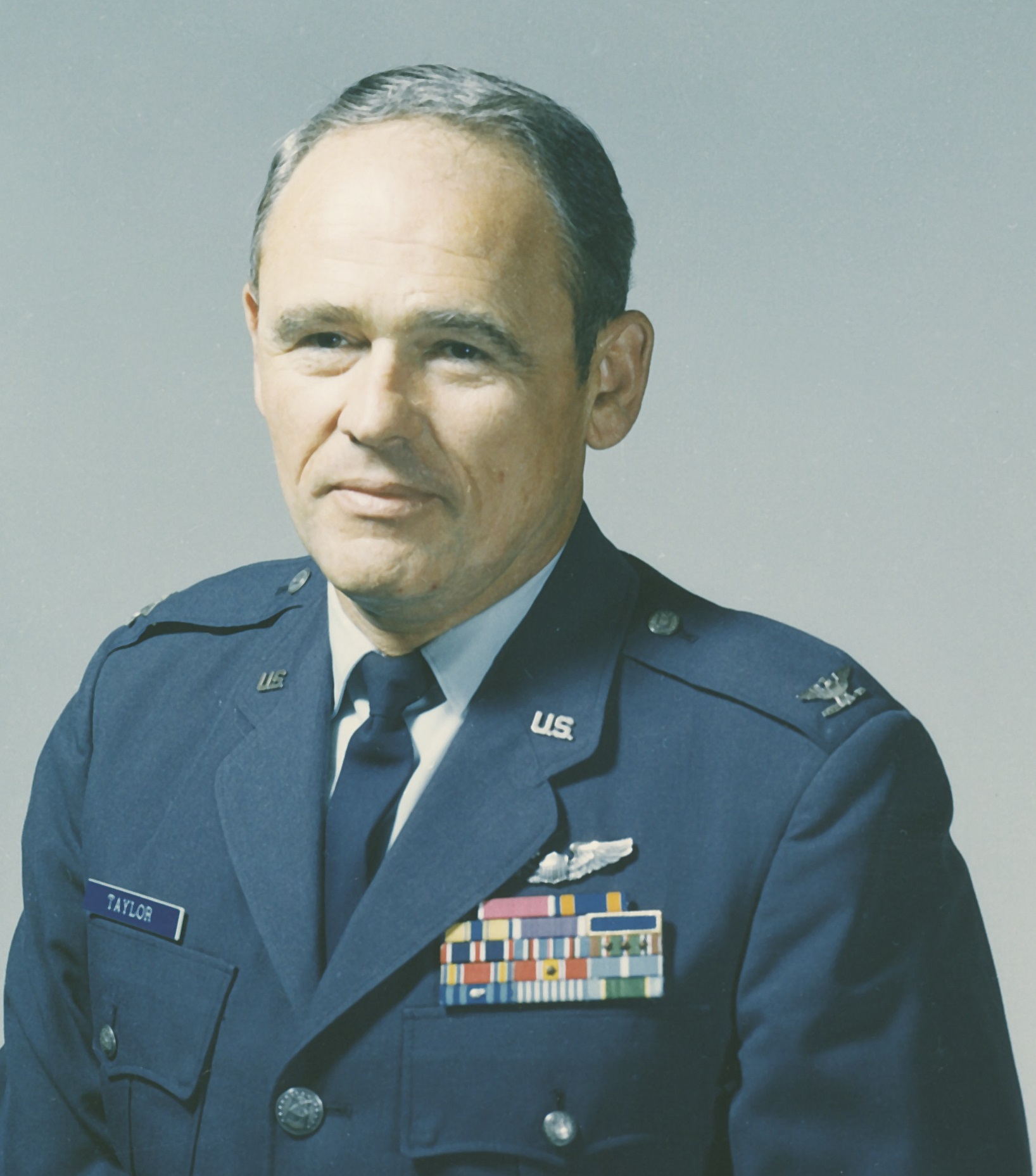Home Index
 Colonel
Colonel
Robert G. Taylor
Permanent Professor 1966–1975
B.A., University of California, Los Angeles
M.A., Indiana University
Ph.D., Indiana University
Robert Guilford “Gil” Taylor, the Academy’s 16th Permanent Professor, was born in Lincoln, Nebraska, in 1921. He joined the Army Air Corps as an aviation cadet in 1942, after completing his Bachelor’s degree at UCLA with majors in Economics and History. He earned his pilot’s wings and was commissioned in 1944; following B-17 training he was assigned to the 303rd Bomb Group (Heavy), Molesworth, England. After flying a series of deep penetration bombardment missions, he was shot down in July 1944 and spent more than nine months as a prisoner of war in Stalag Luft I, Sagan, Silesia. He returned to the US after VE Day and assumed duties as a cadre faculty member of the newly formed Strategic Intelligence School, Pentagon, Washington, DC. From 1949 to 1953 he was assigned to the Air Force Reserve Officer Training Corps detachment at Indiana University, where in his off-duty time he completed his Master’s degree in Geography. He then flew B-26s in the Korean War, and at the cessation of that conflict was assigned to Barksdale AFB, LA, as a B-29 Aircraft Commander and Director of Intelligence for the 376th Bomb Wing. In 1954 he rotated to Kadena Air Base, Okinawa, Japan, as Director of Intelligence, 307th Bomb Wing. Later that year he was assigned to HQ Strategic Air Command, Offutt AFB, NE, where he served in several intelligence positions, including Soviet Union area research, aircrew escape and evasion planning, collections, and intelligence inspections. In 1957 he joined the faculty of the Academy’s Department of Military History and Geography. During that tour, he also taught in the Department of Economics. From 1960 to 1962 he went back to Indiana and earned his PhD in Geography. He returned to the Academy in 1962 as an Associate Professor in the then joint Department of Economics and Geography, serving as Acting Department Head for two academic years 1964–1966. In 1966 when the departments were divided again, he was appointed Permanent Professor and Head, Department of Geography. (Geography was re-merged with Economics in 1973, and for a while there was a Department of Economics, Geography and Management, until Management itself became a department in 1982.) During his time as Department Head, he helped the Academy acquire a major mineral collection, which was prominently displayed for cadets. His abiding interest in the formation of the Earth’s crust and rock formations led to his book Cripple Creek (1966), later expanded to Cripple Creek Mining District (1973). In 1973 he took a sabbatical to do field and archival research in Britain, and upon return in 1974 became the Dean’s Executive Officer until his retirement in 1975. He died in 1997 and is buried in the Air Force Academy Cemetery.